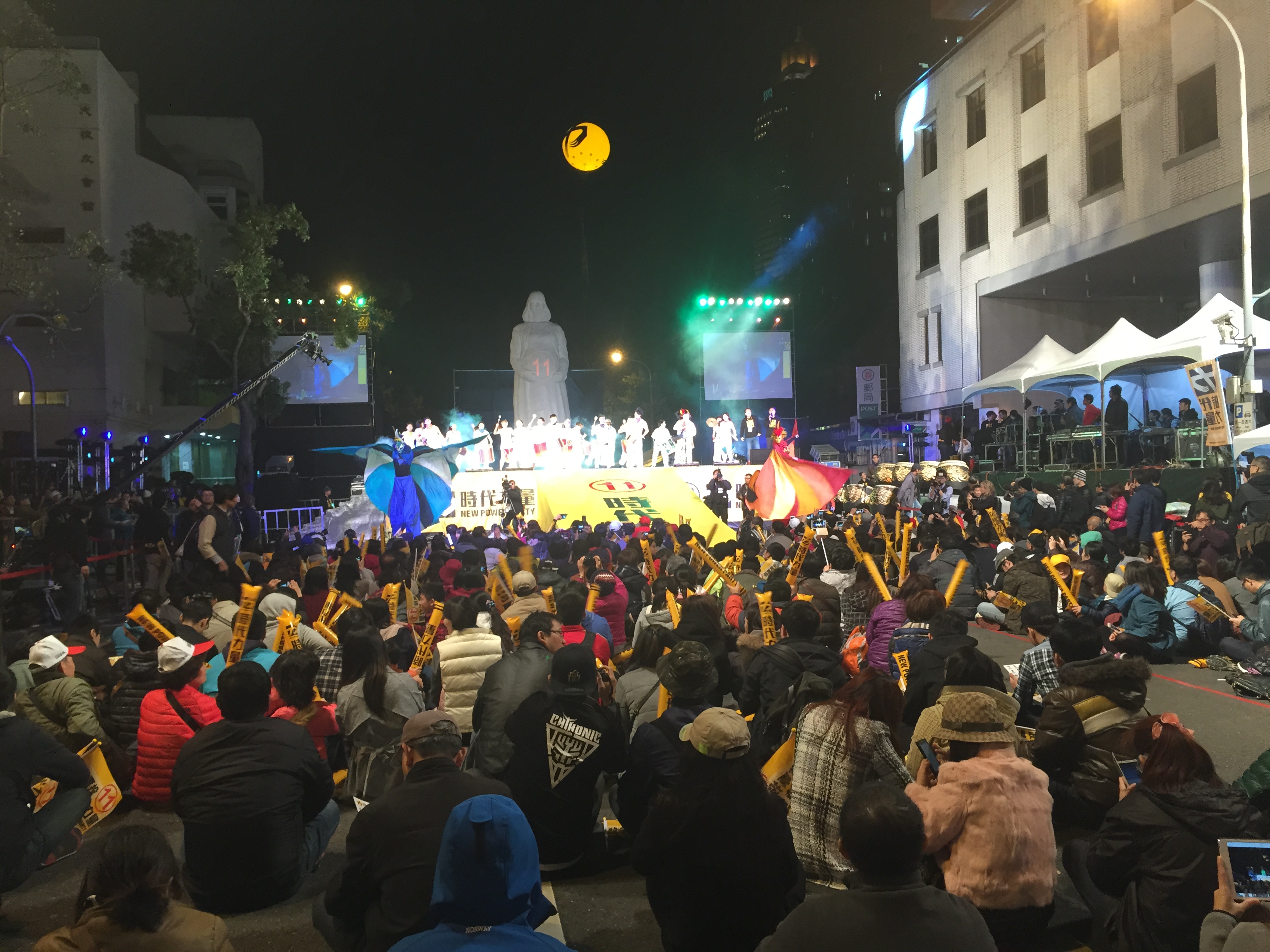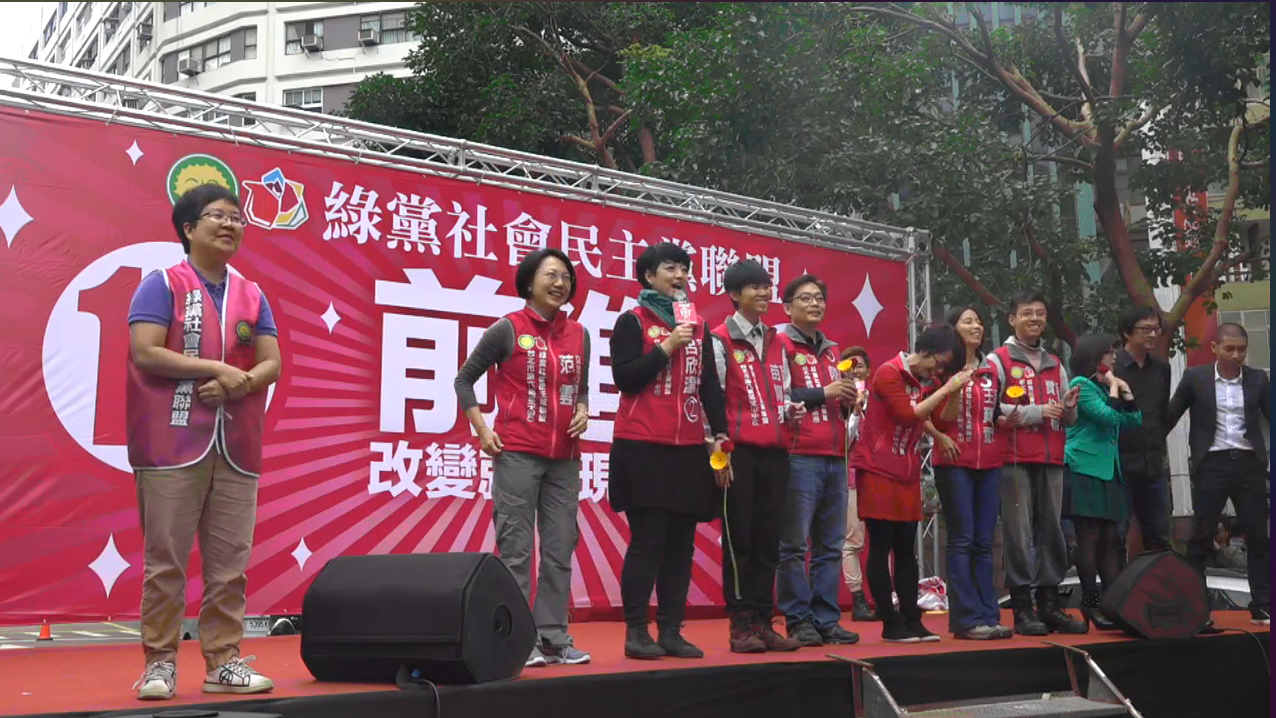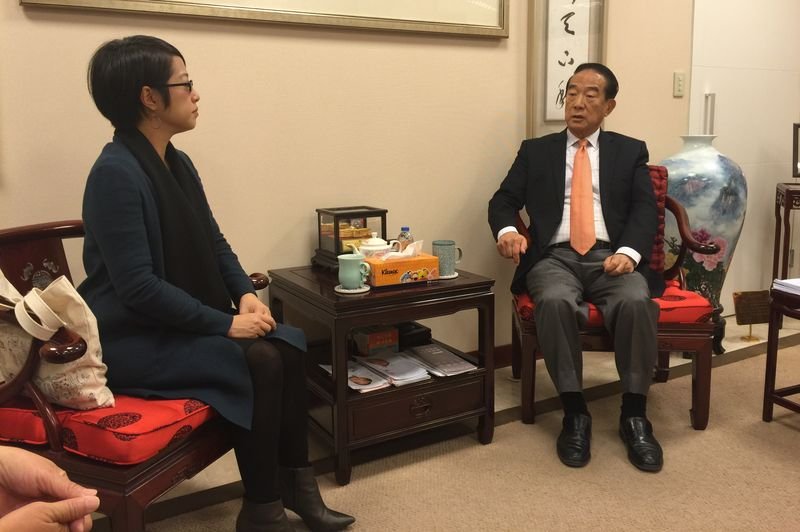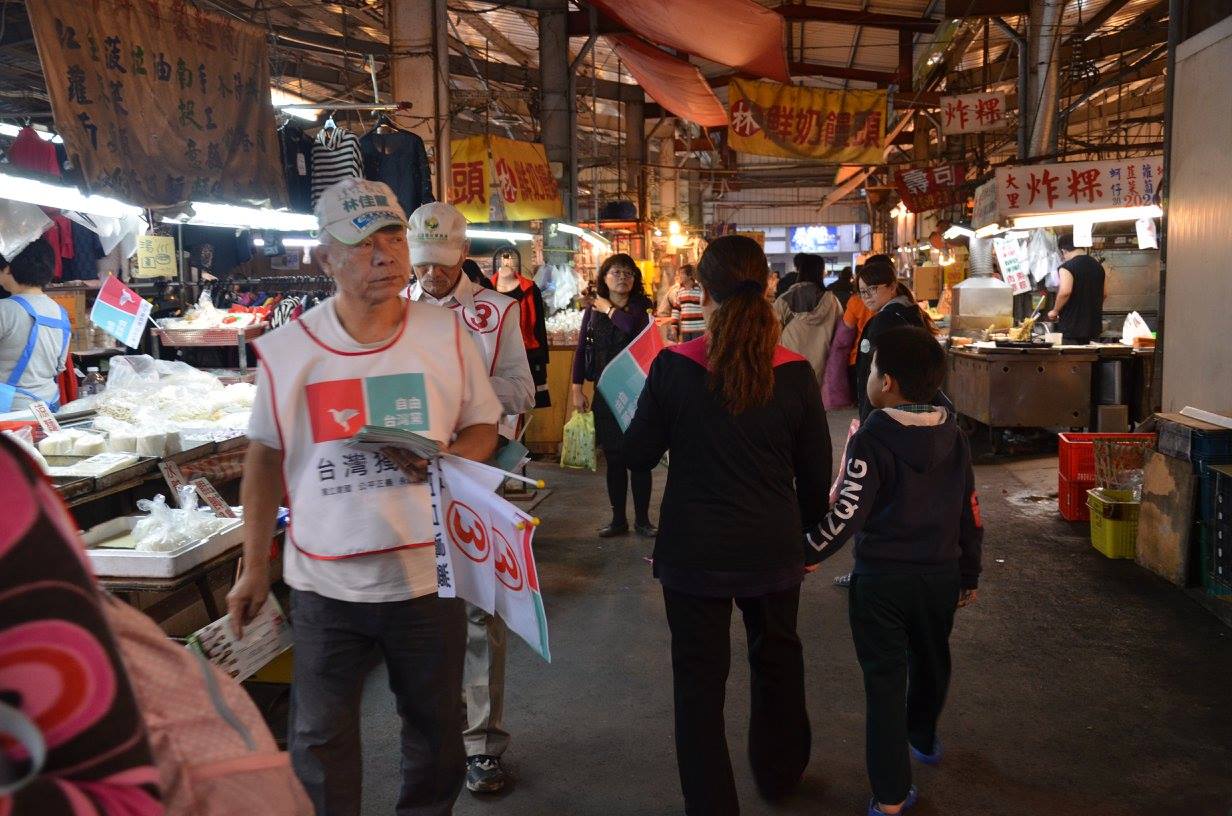The Fraught Relationship of the Third Force and the DPP
by Brian Hioe
語言:
English
Photo Credit: Brian Hioe
INTERESTINGLY, the Third Force adopted an electoral strategy which did not seek to directly challenge the DPP. These parties positioned themselves differently in relation to the possibility of cooperating with the DPP, adopting the strategy of picking traditionally KMT districts to run in. This is to attempt to convince the electorate that they could possibly succeed in winning in those districts where the DPP could not, and negotiate with the DPP not to run a candidate in that district and support them instead.
However, certain parties were more resistant to the idea of working with the DPP than others. In particular, the New Power Party (NPP) was open to the idea of working with the DPP, but the Social Democratic Party was not.
While the Third Force consists of parties formed after the Sunflower Movement, with members and candidates drawn from Taiwanese activism, the project to create a third party was apparently longstanding. For example, the plans to form the New Power Party by Freddy Lim, Huang Kuo-Chang, and others predates the Sunflower Movement and was actually thrown off track by the Sunflower Movement suddenly happening in between.
 New Power Party rally on Jinan Road on January 9th. Photo credit: Brian Hioe
New Power Party rally on Jinan Road on January 9th. Photo credit: Brian Hioe
But the NPP and Social Democratic Party (SDP) both have roots in the Taiwan Citizen’s Union that was formed by former DPP chairman Lin I-Hsiung after his hunger strike which was the last rallying point of the last year’s Sunflower Movement. This was another earlier attempt to create a political party outside of the KMT and DPP that predated the rise of the Third Force, which was a development that occurred after nine-in-one elections. The victory of Ko Wen-Je in nine-in-one elections as an independent candidate proved there was a space for an independent political force in Taiwan.
It appears that the split occurred partially due to interpersonal conflict as well as disagreements about whether to cooperate with the DPP. At that point in time, it was the SDP which appeared to be resistant to the idea of cooperating with the DPP, although the SDP also followed the strategy of not seeking to directly challenge the DPP and hoping to secure the DPP’s withdrawal of its own candidate and support when it could.
Further tensions occurred among Third Force parties with elders of the Taiwanese independence movement such as Peng Ming-Min forming the Taiwanese Independence Action Party and briefly being in talks of potentially merging with the Free Taiwan Party; instead, they decided to merge with the New Power Party. The Trees Party was also a split from the Green Party. The Greens eventually formed an alliance with the SDP to form the SDP-Greens Alliance.
At the Mercy of the DPP From the Beginning?
THERE WAS CONSENSUS among all Third Force parties that there was no way to take on the DPP heads on, but the question at hand was to what degree one should or should not cooperate with the DPP. The struggle of the Third Force has been an uphill one, given that the Third Force has less resources than the KMT or DPP, has lesser known candidates, and is attempting to build something from nothing. As guided by an ideological vision of seeking to create a new form of politics for Taiwan, there was also resistance among the Third Force parties to adopting traditional electoral strategies resembling those of the KMT and DPP even when it would have been easier to try to do as the more established parties usually do for elections. Probably that was the reason for taking such a strategy of not going directly up against the DPP.
And the DPP has been accommodating. If the DPP had just taken a stalwart stance against the Third Force across the board and refused to withdraw, probably the Third Force would have just been pushed out.
 SDP-Greens Alliance rally in Daan on January 10th. Photo credit: SDP-Greens Alliance
SDP-Greens Alliance rally in Daan on January 10th. Photo credit: SDP-Greens Alliance
However, in the post-Sunflower environment, youth have taken center stage in political discourse. The DPP does not want to look as though it is an increasingly aging, increasingly conservative party which disregards the voice of youth when it looks set to take the presidency under Tsai, seeing as the KMT has only been proving itself be an aging, obsolescent party totally disconnected from Taiwan’s youth with its actions during the last year. The DPP fears the criticism made of it that it is not so different from the KMT. So despite the fact that the DPP could have run a more traditional campaign or just edged out the Third Force, the DPP has taken steps to make a campaign which aims to appeal to young people, to appear socially progressive, and to accommodate the Third Force.
But it is in fact in this way that the Third Force was at the mercy of the DPP from the beginning. This is maybe how we can understand the backsliding of even those parties who were resistant to working with the DPP or using traditional methods of election advertising but were eventually forced to do so.
Eventual Cooperation With the DPP Even After Having Vowed Not to Cooperate
THE NEW POWER PARTY was open to cooperating with the DPP from the beginning, neither did the Free Taiwan Party view itself as antagonistic to the DPP despite not seeking cooperation either. Thus, it is mostly in the Social Democratic Party that we see retrenchment. Apart from that avoiding more traditional means of advertising such as large campaign banners or sound trucks and relying only on the Internet proved impossible, the SDP also has become remarkably closer to the DPP.
We see this in SDP leader Fan Yun making public appearances with DPP presidential candidate Tsai Ing-Wen and meeting with DPP minority whip Ker Chien-Ming at a campaign event of Ker—who is seen by many Taiwanese activists as an example of a DPP politician who has abused his political power—in a scraping manner. We also see this SDP Li Yan-Rong conducting a private meeting with none other than James Soong of all people! Despite presenting itself as the most ideological of the parties, as a party driven by leftist ideology above putting forward famous electoral candidates, particularly in light of its previous promises to refuse to politically compromise the SDP sometimes perceived as having capitulated especially hard.
 Li Yan-Rong meeting with James Soong. Photo credit: Storm Media
Li Yan-Rong meeting with James Soong. Photo credit: Storm Media
The DPP has gone out of its way to spotlight cooperation with the NPP, as we see with the appearance of Tsai Ing-Wen at high profile events. Tsai Ing-Wen has also been directly featured in NPP campaign banners expressing that the NPP candidate is the preferred candidate of Tsai in an electoral district. Again, the DPP wants to present an image of having Taiwanese youth on their side in this election.
Thus, there has been some backlash against the Third Force from Taiwanese activists because of the perception that that many Third Force parties have been co-opted by the DPP. Certainly, there would be a large degree of truth to that the Third Force ended up moving closer to the DPP even when it claimed this was precisely what it would not do.
Which Way Forward for the Third Force?
BUT IF THERE has been a need by the Third Force to compromise and work with the DPP in order to get its foot in the door of the legislature, will the Third Force turn on the DPP in the future?Actually, it also seems possible that if the Third Force does better than expected, it will be the DPP that gets antsy and puts an end to cooperation themselves. We are currently seeing renewed calls by the DPP to concentrate party votes on their party list, as though having become anxious that it threw too much support to the Third Force.
Yet if the Third Force was founded upon the aspiration to create a new political force in Taiwan which was neither pan-Blue nor pan-Green, rather than some new permutation of pan-Green, it is also not impossible for the Third Force to move towards living up to its ideological claims once more firmly established. All the same, continuing to compromise might be the path of least resistance at this point.
 Photo credit: Free Taiwan Party
Photo credit: Free Taiwan Party
Likewise, even if the Third Force survives, it is a question as to the long-term survival of the Third Force. Certainly, it seems impossible for all Third Force parties to survive the present election. Thus, whatever the results of the election, there will subsequently be a culling among Third Force parties.
Nevertheless, whither the Third Force? If the outcome of the presidential election seems all but set in stone, the fate of the Third Force reflects how the outcome of legislative elections are still up in the air. And we shall see as to the future of independent politics in Taiwan.


 New Power Party rally on Jinan Road on January 9th. Photo credit: Brian Hioe
New Power Party rally on Jinan Road on January 9th. Photo credit: Brian Hioe SDP-Greens Alliance rally in Daan on January 10th. Photo credit: SDP-Greens Alliance
SDP-Greens Alliance rally in Daan on January 10th. Photo credit: SDP-Greens Alliance Li Yan-Rong meeting with James Soong. Photo credit: Storm Media
Li Yan-Rong meeting with James Soong. Photo credit: Storm Media Photo credit: Free Taiwan Party
Photo credit: Free Taiwan Party